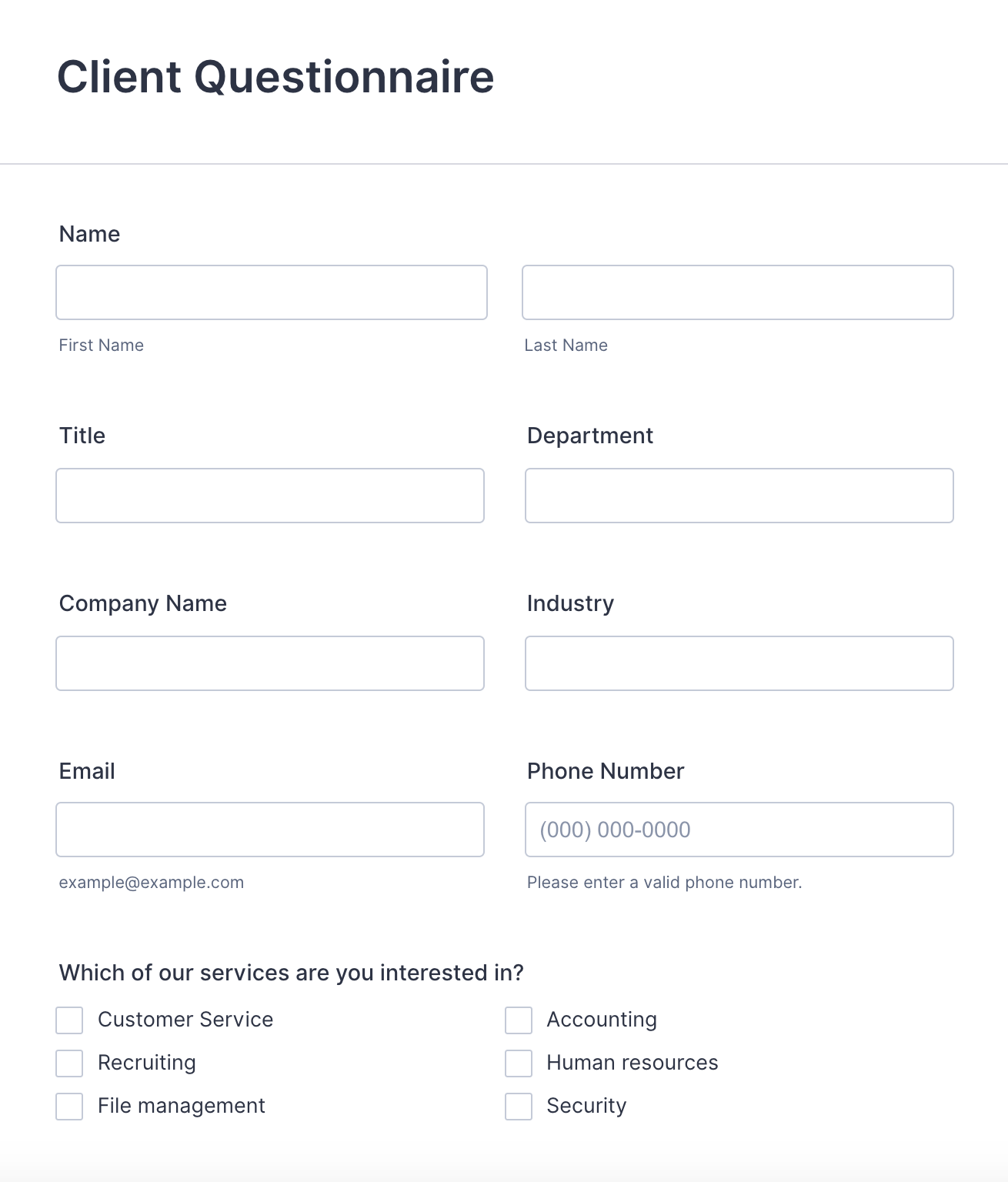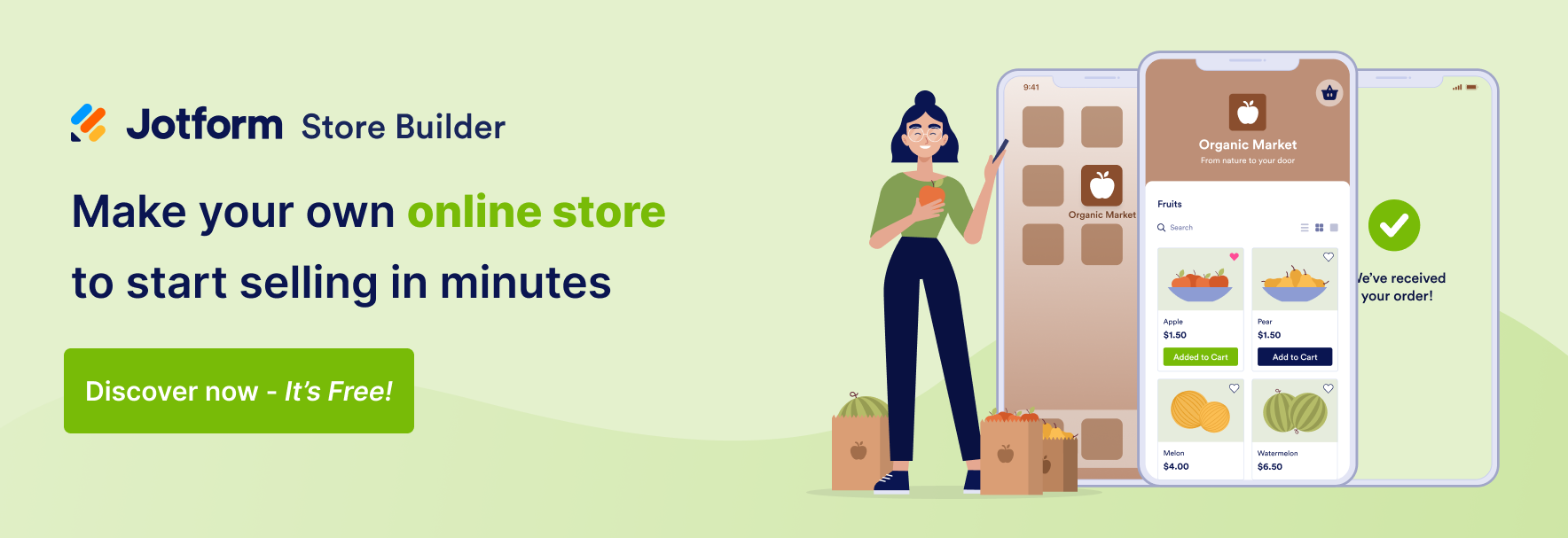The customer retention conversation always includes the cliché that it’s cheaper to get your existing customers to make another purchase than to find a new customer. But what if we look at customer retention from a slightly different angle? It’s a whole lot easier to set up customer retention tools and practices than to build enough marketing campaigns to replace existing customers with new ones.
There’s a lot you can automate — from web forms and checkout processes to emails, data collection, and returns support. But before you fire up your CRM and other tools, let’s chat about the why behind these tactics, a few best practices, and share some thoughts on what your customers need from you to become return buyers.
Pro Tip
Create surveys, questionnaires, and booking forms for your customers with Jotform. It’s free!
1. Give customers a good reason to create an account
The best way to get customers to stick around longer is to give them a reason to hang around. Provide something tangible and exciting to entice people to create an account with you.
In the short term, or for that first sale, this often means giving people an option to create an account easily during checkout. Here, you can provide specific benefits such as better tracking, verification, and order interactions. You’re making it simple for them to follow their purchase, while their web browser can tell you where the first sale came from each time.
To stay relevant longer, provide consistent benefits through customer accounts. This is where you have conversations and turn those chats into genuine relationships. Push the perks of the account and give people a good reason to maintain it.
Start with what you would want from a brand you like:
- New product announcements, only when they’re relevant to you
- Discounts, coupons, or free shipping
- Rewards for purchases and activity
- Exclusive deals throughout the year just for being a subscriber
- Thank-you notes
A great way to build this relationship and grow your outreach is to thank your customers throughout the year. You appreciate them not only when they make a purchase but for interactions like sharing your products. Take a few moments to tell them that.
Pro Tip
Improve customer retention for your e-commerce business with an AI phone answering system for faster, more personalized support.
If you’re struggling to figure out how, get out of the e-commerce mindset and explore the five common love languages. This will show you how different people want to be treated.
2. Collect data but only what people are OK giving
What information do you actually need in order to provide customer support or create a customer account?
Of course, you’ll need the customer’s name and address, plus an email or phone number to connect just in case something goes wrong. But do you really need to ask how they heard about your brand, for suggestions, or for contact information of someone else who you can email?
Collect only the information you absolutely need, and let your CRM and other tools do the heavy lifting of connecting the customer email to purchase and viewing habits or other actions. Your customers will thank you for it. Some studies have found that 67 percent of visitors will abandon a form if it gets too complicated or something goes wrong.
Here are some Jotform customer registration templates to get you started. These tools make it easy to adjust as needed or to run multiple forms on your website. That’s important because figuring out the exact length of your form will take some time.
You’ll want to A/B test to determine how much data to collect. That’s because, according to case studies, context matters. The bigger the purchase, the more likely the customer will want a longer form. Expensive purchases also make people more likely to use multiple forms during their interactions with you.
In e-commerce, this is less common, so keep things short unless you sell big-ticket items or have very high additional costs — such as for shipping, which could require additional information to calculate the price for very large or heavy items.
Make it easy for people to fill out your forms, so that they will complete the process without getting frustrated.
3. Build out email marketing
Once you’ve created your forms, it’s time to use them and the data they gather. Email remains one of the best ways to reach out to customers and build relationships. It’s how you deliver thank-yous and greetings as well as welcome new buyers and share information about an order.
If you plan on pursuing upsells and cross-sells, email is a reliable method. It can leverage your customer account data and ensure that the products you push are personalized and relevant. HubSpot has a fantastic guide to these selling opportunities, including how you can demonstrate value and make a compelling case based on customer preferences, all via email.
Another significant benefit of email marketing is that you can do more than just sell. Part of the retention plan is keeping customers engaged and excited about what you offer. Email allows you to track things like clicks, opens, and whether or not the encounter led to a purchase.
Your email platform can help identify those who open an email but aren’t doing anything else. Give them a slight prod by saying hi and sending a coupon or just letting someone know that you miss them. Personalize these emails for holidays, birthdays, and when people hit milestones of either being a customer for a predetermined amount of time or being inactive for a certain amount of time.
4. Improve the end of the experience
Delivery and returns are two prominent elements of the customer experience that you can’t afford to neglect. When you get these right, you ensure that the customer has a good lasting impression of your company and that they don’t encounter any frustration.
Shipping has become a significant sticking point for many customers. They want things delivered fast and cheap, usually within two to three days. Plus, they want to know what you’re going to charge them right away — so no hiding things until the last possible second or having phantom shipping fees that aren’t explained.
For e-commerce businesses, this may mean you need to partner with an e-commerce fulfillment company. These providers help get your packages to people regardless of where they buy. The right partner can help you sell on Amazon or on your own.
Partnering with an established provider gives you access to policies and processes designed to make shipping easier. The customer gets their package delivered on time. But they only know about your brand, so you get all the credit.
At the same time, you get access to reduced shipping rates and more shipping options because your partner can negotiate rates with carriers like UPS and FedEx based on their entire shipping volume, not just how many packages your individual store sends.
Customers want to buy easily, and they want to return things the same way. For more than a decade, the Zappos brand (now a part of Amazon) has offered extensive return options that allow customers a lot of freedom. The policy keeps people happy, and believe it or not, the most profitable customers are the ones who return the most orders.
Needs change. Or sometimes we buy a little too much when stressing out ahead of an event, or at 3 a.m. when we can’t sleep. Be flexible with customers, and they’ll reward you.
It’s becoming super easy to support returns. With warehouse systems or the right partnerships, you can quickly get returned products back into inventory and use them for future orders. The same tools can generate labels to let customers ship things back for free, while still giving you the best possible pricing on those packages.
You’ve got a lot of the power here. Use it to help your customers and keep them happy.
5. Focus on your brand
We’re going to wrap up with one of the things that often gets lost in this discussion: What makes your brand unique and compelling.
Why do customers buy from you in the first place?
Whatever the reason, retention is all about extending it and the feeling it creates beyond the initial interaction. It covers everything from how the first order is delivered to your messaging for each subsequent purchase and all the deals, discounts, and greetings along the way. There was something that made people want you, and all the work after that first sale should go into keeping that feeling alive.
It’s the heart of any good relationship.
Define your brand clearly and work to understand what people want. Ask them directly if you need help figuring it out. Then, build the experience around those qualities. If customers like your transparency and simplicity, ensure that customer support feels the same way. If they like your product quality, review your quality assurance steps for a new product or manufacturing partner. For availability and product range, start sourcing multiple production options to limit supply chain bottlenecks.
The first purchase shows that people like you. Now, do everything you can to keep it that way while staying true to the core values that landed the first sale.



























































Send Comment: